#The Hands of Orlac
Explore tagged Tumblr posts
Text










Horror movies of the 1920s
#horror#horror movies#horror movie#movie#movies#gifs#gif#horror gif#horror gifs#my gif post#my gif#my gifs#horror edit#horroredit#20s horror#nosferatu#nosferatu 1922#the phantom of the opera#the hunchback of notre dame#the cabinet of dr. caligari#the hunchback of notre dame 1923#the hands of orlac#Faust#the unknown 1927#the man who laughs#Cagliostro#Faust 1928#the phantom of the opera 1925#lon chaney#lon Chaney sr
768 notes
·
View notes
Text

Conrad Veidt in Orlacs Hände | 1924 | dir. Robert Wiene
#orlacs hände#the hands of orlac#the hands of orlac 1924#conrad veidt#1920s horror#1920s movies#1924#robert wiene#drama#thriller#classic horror#german expressionism#silent film#horrorgifs#gif#my gifs
185 notes
·
View notes
Text


Peter Lorre - Mad Love (1935)
#peter lorre#mad love#the hands of orlac#dr. gogol#karl freund#frances drake#30s horror#30s movies#1930s#1935
359 notes
·
View notes
Text
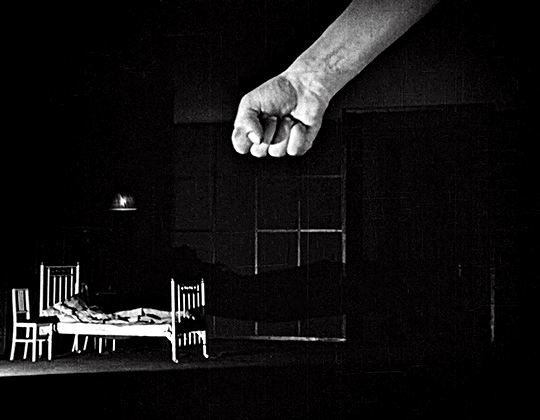
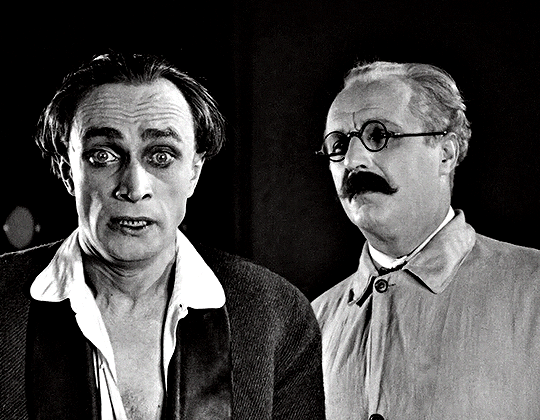
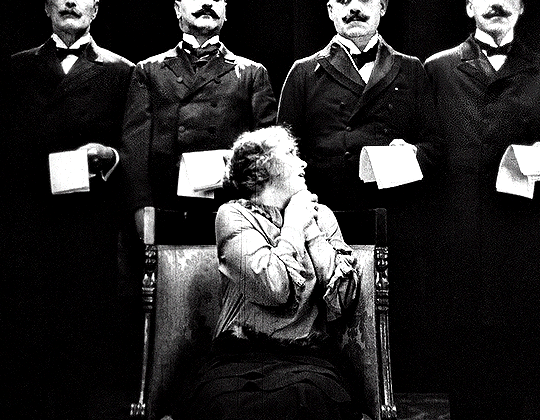
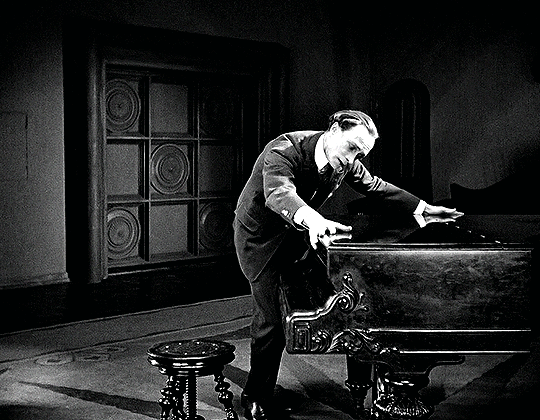
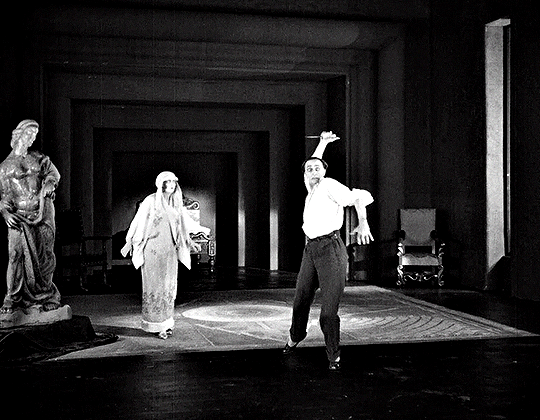

THE HANDS OF ORLAC | ORLACS HÄNDE (1924) dir. Robert Wiene
#the hands of orlac#robert wiene#silent film#conrad veidt#classicfilmedit#filmedit#classicfilmsource#classicfilmblr#classicfilmcentral#dailyworldcinema#cinematv#cinemaspast#uservintage#userstream#filmdaily#filmgifs#moviegifs#*mine#1920s#films#horror#y: 1924
871 notes
·
View notes
Text










favorite horror movies (121-130)
#and that finishes my 130 favorite horror movie series#horror#horror movies#horroredit#moviesedit#filmedit#cinema#horror cinema#the golem#the city of the dead#gothic#def by temptation#phase iv#fade to black#intruder#shadow of the vampire#the hands of orlac#the cat and the canary#*mine*
126 notes
·
View notes
Text
82 notes
·
View notes
Text
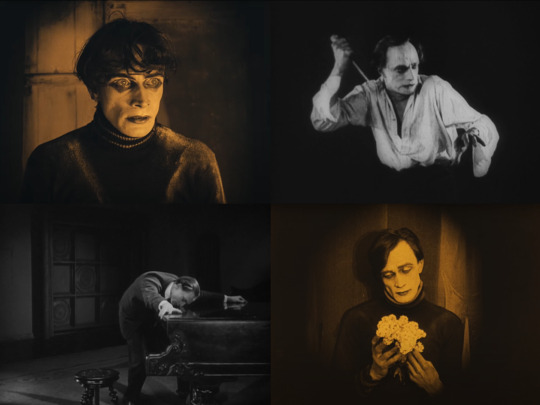
D O U B L E F E A T U R E !
The Cabinet of Dr. Caligari Dir. Robert Weine 1920 // Orlacs Hände (The Hands of Orlac) Dir. Robert Wiene 1924
I recently watched both, Caligari specifically because I was invited on a friend's podcast to talk about the film (I was totally normal about it and definitely didn't make color coded note cards about the making of the movie… I did, I did make color coded note cards). So I figured I would lump these two in one post to switch things up.
--- Even though we talked about the movie for an hour and change, the conversation we recorded for the pod easily could have gone longer. There's so much to unpack about The Cabinet of Dr. Caligari. Between its historical, cinematic, artistic, and cultural significance and legacy, but also the various players on and off camera, not to mention the film's genesis from concept to page to screen -- there's no shortage of rabbit holes to go down.
Something I wish I had brought up during the recording was the score: The score matters! These updated silent film scores really do affect the viewer experience, and they're so often hit or miss. Of course, the original score for Caligari has been lost to time, but I read that the premier of in New York had classical music (Prokofiev, Stravinsky, etc) played along to the screening; part of me thinks this would be fun to try to recreate. I have no memory of the music when I first saw the film in 2009, but when I rewatched Caligari about a year ago, early in my Conrad Veidt journey, I chose a version on Internet Archive (which is, as of late October, sadly still out of commission *cries in nerd*) and the updated score was almost entirely minimal strings, which created a suitably eerie effect. I couldn't find that exact version elsewhere, so I this time opted for the 2014 restoration that's on Kanopy. The 2014 score is… fine. It’s very busy, trying too hard to sound like a traditional movie soundtrack. There's another version with a really painfully bad guitar-heavy score that I couldn't sit through even 5 minutes of, and still another that's entirely synths. Apparently the new 4K UHD/Blu-Ray that was just released has two new options for the score -- hopefully at least one of them doesn't totally suck!
I noticed deep into my third time viewing the film that I hadn't reached for my phone once. These days, I'll occasionally pick it up and mindlessly scroll through social media while watching a movie. But I think Caligari and a few other silent films require closer attention since they're a purely visual medium. I found myself greedily devouring every frame of Caligari. No shot or scene feels wasted. Honestly, I feel like every movie should be 90 minutes long or less. Anything longer should be turned into a miniseries. But in all seriousness, Caligari is another film I want to physically walk into. It would be pretty easy to recreate these sets, life size in grayscale black and white. The more I think about this, the more I need it. So, so bad.
I also came away this time with a lot of questions, mostly about the main part of the narrative, the story Franzis is telling. But the framing device makes the questions pointless. If the main story is just Franzis's delusion, then the absurdity of the script is totally fine I guess? Except the script that Hans Janowitz and Carl Mayer wrote didn't have Franzis as a patient at the asylum, they hated the framing story twist that was forced on their movie, so all those weird parts of the script and character choices that I'm overthinking and reading too much into are rendered meaningless. It's all in Franzis's head! The story and the characters in it don't matter! Or else are just part of his subconscious! Face palm. Eye roll.
Does the movie even work without the framing device? It would be interesting to show an edited version of the movie without the first and last scenes to someone who's never seen it. And if the twist ending was supposed to dumb down the anti-authoritarian message of the script, I don't know that it's successful. In the end, I still have empathy for Franzis. And we still have an ambiguous ending: Caligari/The Asylum Director looks at Mad Franzis and says, "I know just how to cure him," and there's a creepy iris wipe in on Werner Krauss's face that maybe leads us to think Franzis isn't as delusional as we think he is. So like… even if the whole Dr. Caligari with his sleepy twink in a box story is fake, whatever is happening at the asylum is probably just as messed up if not worse.
Speaking of the twink in a box, I love that Conrad Veidt's German Expressionism is totally different from Werner Krauss's German Expressionism. They both trained and performed with Max Reinhardt, so their foundations as theater actors in the 1910s and 1920s were likely similar. But, regardless or in spite of that shared experience, they are diametrically different human beings and that comes across in their performances in this movie. These two actors are like the textbook definition of "showing" your art vs. "being" your art. Krauss as Caligari is like "ooOOOoo look how ooky spooky and evil I am!", whereas Connie's performance as Cesare, even though it's hyper-stylized, is infused with something deeper, something primal that feels believable in the context of the film.
If Cesare has been asleep his whole life, waking only to be fed Chunky Campbell's Soup and commit murder at Caligari's bidding, then no wonder he reacts the way he does when sleeping Jane finally brings him out of his trance. When she freaks out, he freaks out too because he's had no opportunity to learn how to behave like a human or how to filter his primal emotions in a socially acceptable way. He hasn't lived his life except to be a madman's puppet. He reacts to Jane's panic on instinct and impulse, his desire and fear feel feral, like he's more creature or an animal than a human man. He may not actually want to hurt Jane, but he reacts violently because fight or flight is a basic human stress response! He runs away and eventually collapses because his body can't handle the sudden onslaught of stress and emotion he's never before experienced! And this internal, instinctual tendency to violence is subtly alluded to in the final scene when Asylum Cesare both caresses and slowly picks apart the flowers he's holding. Ahhhhh, I have so many FEELINGS.
And that said… Connie's performance here is wild, but it's real in a way that Werner Krauss's work could never be because Connie was a spiritual humanist who cared deeply for others and Krauss was an anti-semitic piece of shit who therefore could NEVER dig deep enough into his soul or into the collective unconscious the way Connie did to breathe life into his characters. So everything Krauss is doing here and in The Student of Prague is all surface, it's "showing" the audience his training and his actor toolbox rather than bringing a level of honesty and in-the-moment groundedness to these roles.
This is not to say Connie's intense commitment to his work couldn't be, uh, excessive. I really hope Lil Dagover was being serious when she said he would lurk around the studio in character when off camera. Can you imagine? You go up to the craft services table for a snack. Suddenly you feel like you're being watched. You look up and he's looming over you in the shadows, his unblinking glazed eyes boring into your soul. God, I hope this happened and I hope whoever it happened to peed themselves a little.
I also wish we had a behind the scenes photo of Connie in costume with the Cesare dummy. I can't believe someone actually had to make that prop. It'll haunt me forever. (The 1920 Cesare Dummy isn't real, the 1920 Cesare Dummy can't hurt me.)
Bottom line: It's an important film, I appreciate it for both its timelessness and timefullness. But it's not a movie I need to revisit often, regardless of how enchanting Connie's nostril acting may be.
---
The first time I watched The Hands of Orlac, I was floored by the visuals, the staging, and the heavy eroticism. Up until that point, I hadn't seen very many silent films, certainly few as visually striking. I think my initial impressions of this film were somewhat muted on a second watch, but that may just because I knew what to expect.
This time, I wasn't as swept up in the magic of silent era German Expressionist cinema, although stylistically I'm still absolutely 100% obsessed. Art direction wise, this is my favorite between the surviving Wiene-Veidt films (I haven't seen Furcht and I don’t plan to). Orlac is like the darker, sexier, more grown up sister to Caligari's mall goth teen. It's Vampira vs Lydia Deetz.
Orlac is just as much if not more of a cinematic feat than Caligari. The production design and art direction alone feels more mature and in itself tells more of a story.
Very early in the film, we're thrown into a very impressive, very realistic train crash. Opening the movie this way was a really interesting choice -- we don't get to meet the characters before the accident that starts Paul and Yvonne Orlac on their doomed and bizarre trajectory. There is a brief establishing scene of Yvonne reading a really horny letter from her husband, and one of pianist Paul at his final concert before returning home. Then there's a very long sequence of the aftermath of the train crash that almost kills Paul, and this scene brings a level of realism you don't really get in other films of this genre/done in this style. The set construction looks expensive; the mangled train cars piled up in heaps may have been fabricated in the studio, but because of the lighting in the night scene, the billowing smoke from passing locomotives and fires from the crash, it looks pretty damn real for 1924. It's extremely effective and harrowing, especially as Yvonne races to the site of the crash and climbs through the wreckage to try to find her husband. The chaos of the scene, made all the more disorienting by the movement of search lights and the haze of smoke and steam, feels true to life. People are running around, pulling bodies from the ruined train cars, carrying them away on stretchers. Survivors look around dazed, clutching their belongings in shock. It's such a well directed moment in the film, but maybe not the first thing people remember about it. And I think it's inclusion is important because it offsets how weird the movie's about to get.
And boy, does it get weird. However, the doctor does say Paul suffered a skull fracture, so it's not a huge stretch to think he also has some kind of brain injury. So I wonder if that has something to do with how the filmmakers chose to show Paul's intense fear and paranoia, as well as the movie's shift in tone and style after his accident. The nightmarishness of the film, from the exaggerated performances to the set design, feels like an extension of whatever might be going on in Paul's head as a result of his injury.
Regardless, I love the choices the art director made. The set, especially the Art Deco mausoleum the Orlacs have for a home, is so perfect. The huge, cavernous rooms are completely unnecessary, but they make the characters look and feel so helpless, like dolls in a doll house. The lines of the walls and the furnishings draw the eye through the frame with just as much intention as the painted sets of Caligari. Even places outside their house become symbolic and iconographic. The news stand is just a window cut out of a massive wall of loose sheets of newspaper that takes up the entire frame. The interior of Orlac Sr.'s house is like a old, drafty castle, looking more like the home of an evil, miserly king. The tavern where Paul is confronted by Nera feels dank and subterranean, just a lamp or two removed from literal catacombs. The outer world is fully a reflection of poor Paul Orlac's inner torment and despair and I AM LOVING EVERY MINUTE OF IT.
The new music composed by Paul Mercer is perfect, too. It's all skronky violins and cellos, ominous percussion and piano. It's just atmospheric enough, creating moments of soundscapes, echoing footsteps, aural suggestions of the oppressive cave-like rooms where the story unfolds. There aren't really any memorable themes like in the updated score for The Student of Prague, but that works for this movie. I would buy this soundtrack and actually listen to it on its own, it's that good.
Everyone in the ensemble is basically on the same page in terms of acting style, no one feels out of place or miscast. Connie of course steals the show, but Alexandra Sorina as Yvonne gives him a run for his money. She's a good match for him, delivering an appropriately desperate and hysterical (and deeply, deeply horny) performance as the touch-starved wife. Their scenes together are maybe some of the best on screen romantic moments of Connie's silent film work because these two are wildly hungry for each other. This movie is so funny, it tells you immediately how horny it is; in the first 30 seconds of the movie, Yvonne gets a letter from Paul that says, "I will feel your body beneath my hands," like they're telling you straight up this is going to Horn Town. And the way she grabs at him, presses her open mouth to him, hovers over him in his hospital bed, she is DTF anywhere any time. And no shame, no shade, good for her. This is a sex positive film, and we love to see it. But she's not just the sexy wife, she's also totally ride or die for Paul. She truly trusts him and believes his absolutely buck wild story about being blackmailed by a dead psycho killer. What a gal.
Then there's Paul, aka Eraserhead Baby… because when he wakes up from surgery covered in bandages, he looks like the Eraserhead Baby. Connie is doing some of his finest nostril acting in this role, I have to say. As always, I am fascinated by his physicality and the choices he's making with movement and gesture. When his bandages are finally removed, he reacts as though drugged, his movements slow as though underwater or in a dream. And when he confronts his surgeon after discovering the original owner of his newly transplanted hands, he holds them out and away from his body as if they were coated in something dirty or disgusting. As Paul's life and sanity unravel, his hands and fingers are in almost constant motion, curling, twitching, clutching; his body language becomes more creature-like, moving in a way that calls up Cesare the sleepwalker -- interestingly, the two characters both seemingly at the mercy of forces outside their control.
We don’t get to know what Paul was like before the accident, how much this traumatic event changed him. There's something this movie is trying to say about trauma and how it affects people. The doctor tells Paul, "Nature and a strong will can overcome anything." But if Paul sustained any kind of serious brain damage, who’s to say his personality wasn't affected, or that he wasn't fragile and suggestible to begin with? Either way, in the wake of the accident, Paul's vulnerability and circumstance makes him a perfect target for Nera's grift.
Even without being targeted by a sick weirdo con artist, it's no wonder Paul's really going through it. He tortures and punishes himself relentlessly for something that wasn't his fault! (Been there.) He puts on a recording of one of his old concerts and crumples in grief for having lost not only his livelihood but also his outlet for creative expression -- not being able to do what you used to creatively because of trauma is REAL. He's trapped in his misery. Even his handwriting is different, now a violent scrawl he imagines is due to the murderous acts his hands supposedly committed. He secretly retrieves the planted murder weapon in order to further convince himself he's somehow become evil, wielding it as through he committed the crimes of the dead man whose hands now belong to him. And the scenes where Yvonne comes to him, wanting to both devour and comfort him, he cannot bring himself to touch her. Clearly they love each other very much and their relationship was very physical, so the agony and yearning in his face when she embraces him is UGH IT'S SO GOOD. It's heartbreaking. There's a lot to unravel here about trauma, body dysmorphia, and intimacy that I'm interested to dig into during subsequent viewings.
Final thoughts: There's an annoying part of my brain that wants the movie to make sense, for the timeline to be clearer, for loose ends to be tied up. But I know that none of that really matters because this movie is better received as a dream or a nightmare. And by that logic, it doesn't have to make sense. The Expressionist beats are being hit particularly hard, but the surreal quality allows the filmmakers and cast to get away with it. For fans of Conrad Veidt, this is a must-watch, even before Caligari -- he gets more screen time in this film, gets to play with his silent film artist's palette, and gets to do pathos like he's the king of tragic, pathetic characters. He's gangly, glassy-eyed, and trembling like a small wet dog the whole time and it's superb. Despite not really getting a chance to know the Orlacs before they're thrown into their own personal hell of body horror and credit debt, they're both pretty sympathetic. From psychological commentary to the erotic visuals and tension, it's all very ahead of its time.
29 notes
·
View notes
Text
















The Hands of Orlac (1924)
23 notes
·
View notes
Text









'The Hands of Orlac' 1924. Screenshots.
25 notes
·
View notes
Text

『The Hands of Orlac』 (1924)
448 notes
·
View notes
Text

21 notes
·
View notes
Text










Scream King - Donald Pleasence
Requested by Anonymous
#horror#horror movies#horror movie#movie#movies#gifs#gif#horror gifs#horror gif#my gif post#my gif#my gifs#horror edit#horroredit#screamking#scream king#Donald Pleasence#halloween 1978#the twilight zone#the outer limits#the hands of orlac 1960#the hands of orlac#circus of horrors#phenomena 1985#buried alive 1989#prince of darkness#vampire in Venice#from beyond the grave#John Carpenter’s Prince of darkness#gifset
241 notes
·
View notes
Text



Orlacs Hände | 1924 | dir. Robert Wiene
Conrad Veidt as Paul Orlac
#orlacs hände#the hands of orlac#the hands of orlac 1924#conrad veidt#1920s horror#1920s movies#1924#robert wiene#drama#mystery#classic horror#german expressionism#silent film#horrorgifs#gif#gifs#my gifs
161 notes
·
View notes
Text

for @salamansir 's Goretober prompt "movie," here's my character Ron posing like the poster for The Hands of Orlac (1924)

#goretober#original art#mixed media#sketch app#the hands of orlac#redraw#blood#oc tag#oc (ronald)#lonely dog draws#image id in alt text#that poster has such an MS Paint quality to it#i feel like i haven't posted art in a million years GEUHHg#i'm very hmmmmmmmmm I'm very tired
23 notes
·
View notes
Text

Conrad Veidt
Actually Hans Walter Conrad Veidt, was a German-British actor, born on 22 January 1893 in Berlin. initially became famous in Germany, thanks to films such as: "Different from the others", "Das Cabinet des Dr. Caligari" or "The Hands of Orlac". After a career in silent films, he became a best-paid star UFA.
As a child, he lived in the family home at Tieckstraße 39 in Berlin with his mother, Amalie Marie, and Philipp Heinrich Veidt, a former military man who became a government official. his father was strict unlike his mother who was caring and sensitive. He came from a Lutheran family in the Lutheran Church and was baptized on March 26, 1893. He also had an older brother, Karl, who died in 1900 of scarlet fever at the age of 9. two years after Karl's death, his father became seriously ill and required heart surgery. As Conrad's family was not wealthy and could not afford such an expense, the doctor only demanded the fee that the family could afford. Young Veidt was delighted with the surgeon's kindness and swore to follow the example of the man who saved his father's life, from that moment on he wanted to become a surgeon. Niesetu's dream of becoming a surgeon was thwarted when he graduated in 1912 without a diploma and placed 13th out of 13 students, and was also discouraged by the amount of study it took to get into medical school. However, a new career path opened up for Conrads during a Christmas performance in which he delivered a long prologue before the curtain rose. The performance was bad, but the audience thought that Veidt did really great. Conrad became interested in actors, but his father considered stage artists to be outcasts and often called them gypsies. Thanks to part-time work and pocket money from his mother, Veidt was able to afford to attend theaters in Berlin. After each performance he stood in front of the Deutsches Theater waiting for the actors or hoping that he would be mistaken for an actor. At the end of the summer of 1912, he met a theater porter who introduced him to the actor Albert Blumenreich, who agreed to give Corad acting lessons for six marks. He was given 10 lessons before auditioning for Max Reinhardt reciting Goethe's Faust. Reinhardt offered Veidt a contract as an assistant for one season from September 1913 to August 1914, with a salary of 50 marks per month. During this time he played episodic roles as spear carriers and soldiers. His mother attended almost every performance of her son. After a successful career, they decided to extend his contract for a second season, but World War I broke out and on December 28, 1914, Conrad was enlisted in the army. In 1915 he was sent to the Eastern Front as a non-commissioned officer and took part in the Battle of Warsaw. In the meantime, he contracted jaundice and pneumonia and had to be evacuated to a hospital on the Baltic Sea. While convalescing, he received a letter from his girlfriend Lycie Mannheim informing him that she had found a job at the Front Theater in Liepāja. This news prompted Veidt to apply to the theater. because his condition was not improving, the army allowed him to join the theater so he could entertain the soldiers. While working in the theater, his relationship with Lucie ended. In 1916 he was examined by the army again and found unfit for service; On January 10, 1917, he was granted full parole. Conrad returned to Berlin where he was accepted back into the Deutsches Theater. There he played a small role as a priest which earned him a favorable review - the reviewer hoped that "God would save Veidt from the cinema" but luckily this did not happen.

One of his first and most important films was the role of a sleepwalker in "Das Cabinet Des Dr. Caligari" (1920) directed by Robert Wiene, which became a classic of German and expressionist cinema. The film also changed a lot in cinematography and was quite controversial for its time, but now it is well known to us and appreciated by every fan of cinematography. he also first starred in the film "Anders als die Andern" (1919) in which Conrad and Reinhold Schünzel played the main roles. All copies of the film were corrupted by the Nazis because the homosexuality depicted in the film was considered a disease at that time. Currently, only a small part of the film can be watched, that is, the part of the film that was saved. In 1924, he played in the film "Orlac's Hands" based on the book by Maurice Renard. It's time for Conrad's great success outside Europe. In 1928, he played the role of Gwynplaine in the film "The Man Who Laughs" based on the book by Victor Hugo (I recommend watching the film, it's really great. Conrad's role in this film influenced culture, Joker's appearance is inspired by the Veidt. Of course, it is worth mentioning roles in horror films, e.g. "Der Student Von Prag" (1926) and "Das Wachsfigurenkabinett" (1924). He also starred in the first German film with sound. "Das Land ohne Frauen" (1929). At the end of the 20s he went to Hollywood where he played a few roles, but with the advent of sound in films he had to give up acting in America and returned to Germany. During this time, he became a teacher for many aspiring artists, including Lisa Golm.Interesting fact: the role of Dracula was written specifically for Conrad, but Veidt was afraid that his English was too poor, instead the role of Dracula was played by Béla Lugosi, whose English was not better.

Veidt did not support the Nazi regime and sent funds to help the British during the German Blitz bombings. Shortly after the Nazi Party took power in Germany in March 1933, Joseph Goebbles purged the film industry of political opponents and Jews. In April 1933, a week after Cornad's wedding to Prager, a Jewish woman also known as "Lilli", they emigrated to Britain before any action could be taken against them. Goebbles imposed a "race questionnaire" in which every actor employed in Germany had to declare his "race" in order to continue working. When Veidt filled out the questionnaire, he answered the question about his race by writing "Jew." Veidt was not of Jewish origin, but his wife was, and Veidt would not abandon the woman he loved so much or cooperate with the regime, as many others did. Veidt was against anti-Semitism and showed it publicly and said it loudly. he supported Jews who were deprived of German citizenship in the spring of 1933. Conrad was informed that if he got a divorce and declared support for the new regime, he would still be able to operate in Germany, which he rejected because, as he claimed, nothing could cause him to divorce Lilli. After arriving in United Kingdom, Veidt improved his English and starred in the original anti-Nazi films The Wandering Jew (1933) and Jew Süss (1934). On February 25, 1939, he received British citizenship. During this time, Conrad made films in both French and English.
I think these are the key and important moments in Conrad Veidt's life.
Trivia
Conrad, through his lawyers, gave children locked in shelters in London 2,000 tins of sweets, 2,000 large packets of chocolate and 1,000 gift envelopes in the form of British currency. all to improve their mood during the Christmas :)
Veidt helped his parents-in-law from Austria get to Switzerland and in 1935 he managed to obtain permission from the Nazi government for his ex-wife and their daughter to move to Switzerland. He also offered to help Felizitas' mother ( his ex-wife's mother), Frau Radke, leave Germany. but she refused, saying "no damn little Asutrian Nazi corporal will make me leave my house." Apparently she survived the war, but Corad never saw her again.
"There are two different kinds of men. There are the men men, what do you call them, the man's man, who likes men around, who prefers to talk with men, who says the female can never be impersonal, who takes the female lightly, as playthings. I do not see a man like that in my mirror. Perhaps, it is because I think the female and the male attract better than two men, that I prefer to talk with females. I do. I find it quite as stimulating and distinctly more comfortable. I have a theory about this - it all goes back to the mother complex. In every woman, the man who looks may find - his mother. The primary source of all his comfort. I think also that females have become too important just to play with. When men say the female cannot discuss impersonally, that is no longer so. When it is said that females cannot be geniuses, that is no longer so, either. The female is different from the male. Because she was born to be a mother. There is no doubt about that. But that does not mean that, in some cases, she is not also born a genius. Not all males are geniuses either. And among females today there are some very fine actresses, very fine; fine doctors, lawyers, even scientists and industrialists. I see no fault in any female when she wears slacks, smokes (unless it is on the street, one thing, the only thing, which I don't like), when she drives a car... when men say things like "I bet it is a woman driving" if something is wrong with the car ahead - no, no. These are old, worn out prejudices, they do not belong in today"
~°~
Conrad died on April 3, 1943 from heart disease.
(Sorry for any mistakes, remember I'm not from an English-speaking country, the information comes from Wikipedia and various websites that you can easily find :)
#actor#movie#movies#old movies#old cinema#1930s#1920s#conrad veidt#das cabinet des dr. caligari#the hands of orlac#waxwork#the man who laughs#old hollywood#classic hollywood#cinema#the cabinet of dr. caligari
26 notes
·
View notes
Text

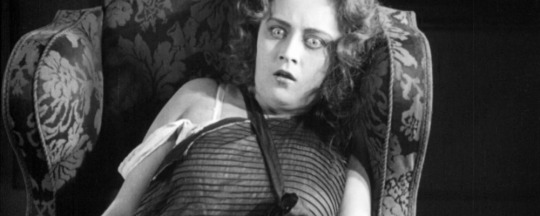
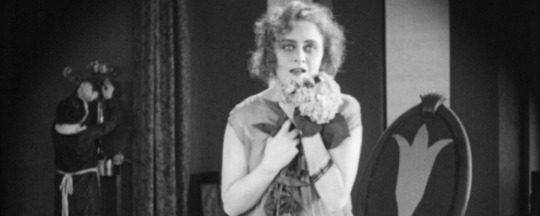

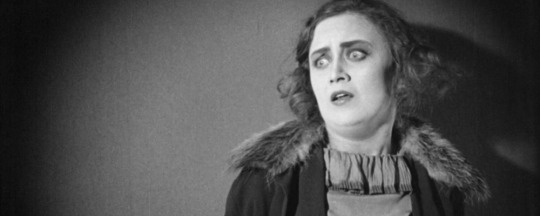
1920s ladies: alexandra sorina as yvonne orlac in the hands of orlac (1924)
#1920s#1920s cinema#old cinema#alexandra sorina#the hands of orlac#horror#silent horror#horroredit#moviesedit#filmedit#cinema#screencaps
54 notes
·
View notes